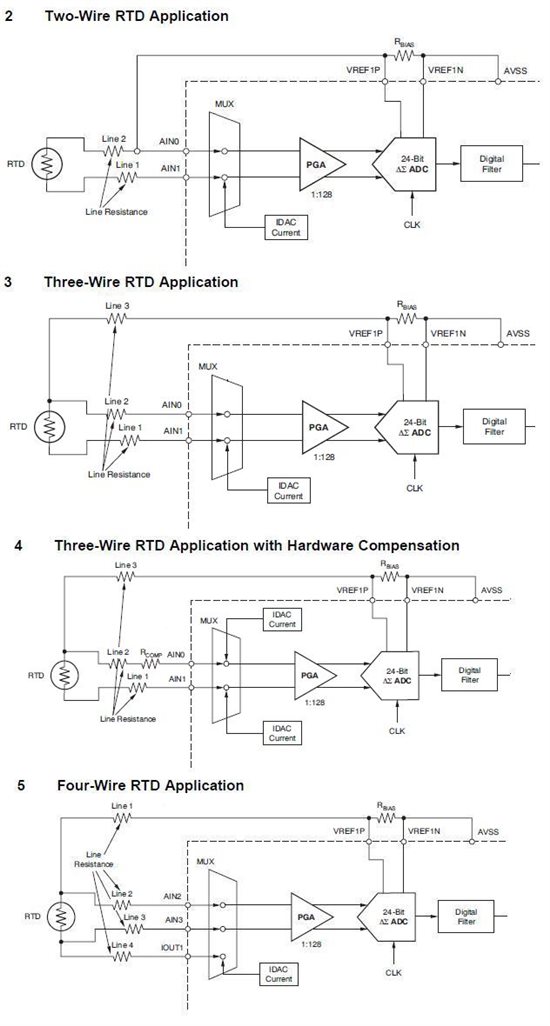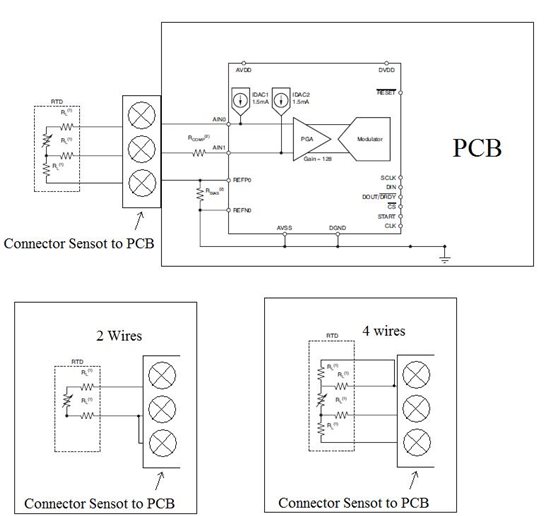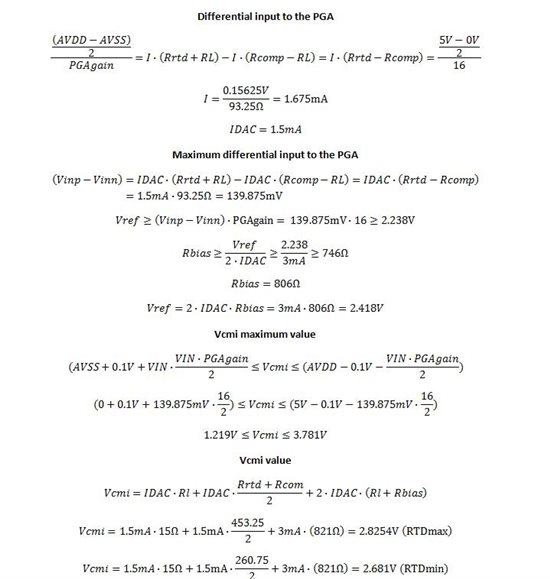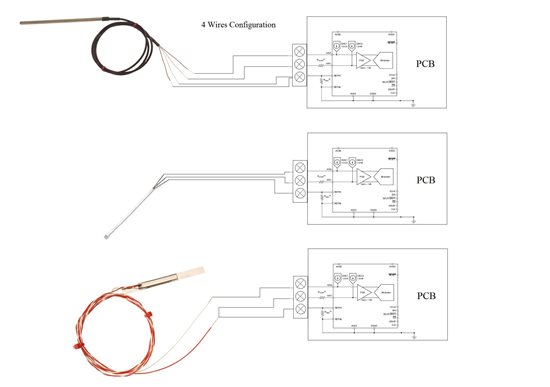Hello,
First of all, I wanted to thank those who make this forum possible,it is helpful.
I am designing a device to measure temperature with a PT100 using the ADS1148. I would like my device was suitable for measures with 2,3 and 4 wires. I have several doubts:
- is it better option use a big Rbias (25kohm), high PGA Gain (128) and low IDAC current (about 0.1mA) or viceversa?
- What is the differnce between 3 wires using a Rcomp and 2 IDACS and 3 wires without Rcom and with 1 IDAC (figures 3 and 4). Is it I can place a smaller Rbias with higher IDAC and PGA gain? or to use all the full scale, because ADC (modulator) input varies between -1.25V and +1.25V instead of 0 and +2.5V (using AVDD-AVSS = 5V)?
- VCMI for the circuits are:
2) VCMI = IDAC*(2*RL+RRTD)/2 + IDAC*Rbias
3) VCMI = (IDAC*(RRTD+RL)+IDAC*RL)/2 + 2*IDAC*(Rbias + RL)
5) VCMI = IDAC * (2*RL + RRTD + Rbias)
Are correct?
Thank you very much
Regards
Andres










